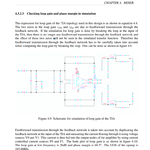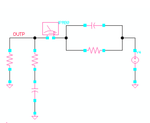chenximing4305
Newbie level 5
HI,
i study the thesis as attached file,and has a question.in page 65,the testbench for loop stablity of TIA.i cann't undenstand how does it work.

View attachment eetop.cn_DESIGN OF LNA and MIXER FOR MULTI-BAND WCDMA (1).pdfView attachment eetop.cn_DESIGN OF LNA and MIXER FOR MULTI-BAND WCDMA (1).pdf
i study the thesis as attached file,and has a question.in page 65,the testbench for loop stablity of TIA.i cann't undenstand how does it work.

View attachment eetop.cn_DESIGN OF LNA and MIXER FOR MULTI-BAND WCDMA (1).pdfView attachment eetop.cn_DESIGN OF LNA and MIXER FOR MULTI-BAND WCDMA (1).pdf

